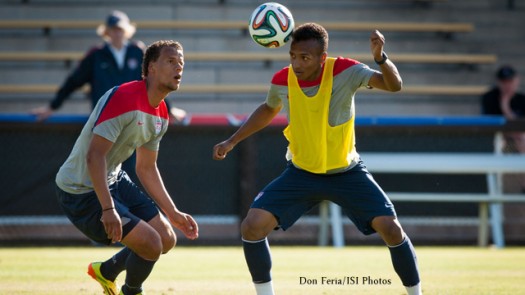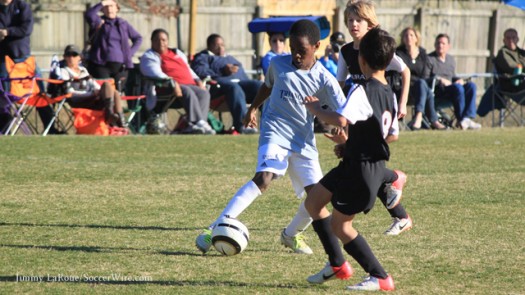LeBolt: Five ways to ruin preseason soccer training
 Transitions are always hard. Firing our reverse thrusters to slow to the pace of summer may have been taxing, but the swimming pool, the lake, sleeping in, and vacation travel are pretty easy to get used to.
Transitions are always hard. Firing our reverse thrusters to slow to the pace of summer may have been taxing, but the swimming pool, the lake, sleeping in, and vacation travel are pretty easy to get used to.
But never fear, the school year is almost here. Which means preseason soccer training and camps are revving up for fall league play. Unfortunately, many approaches to preseason prep hurt rather than help the team’s chances for healthy play and a winning season.
+READ: LeBolt: Five simple tests to identify increased risk of ACL tear
Here are five mistakes we make in preseason training, and how to avoid them:
1) We start too fast
Trying to jump back in where we left off last spring spells almost certain disaster. Even the most dedicated players have taken time to do other stuff over the summer. Vacations, time at the pool, sleeping in and playing video games leave a preseason kid with some work to do to get back in shape. A punishing first day back may be a wake-up call, but too much, too fast invites injury.
Players need a challenge, but also plenty of recovery time, while they build a foundation of fitness which will be their platform for performance all season long. They should come home from first day back at practice with a “good tired.” Dragging up the stairs is fine. Collapsing on the couch, unable to get up in the morning, is not.
2) We call it conditioning
Conditioning, training, workouts — all synonyms for boring, hard, pain, don’t-want-to-do-it. There’s a reason that college players fear the brutal drills, tests and assessments required during the preseason. Is this really what we want our youth players to think of as “getting back to the game they love to play”?
The ball is fun. When we tell the kids to put the ball aside, they know what’s coming: work.
Yes, being fit, fast, agile, strong and reasonably flexible is important for performance and the prevention of injuries, but why separate this from the game? All of their training is “preparation” for game day. Running “conditioning” drills is lazy coaching.
The creative coach can design the demand for sprints, continuous movement, eluding tackles, avoiding other players and reaching for boundaries with head, hand or foot into game play. All those are part of a very competitive game of tag. No one would mistake that for conditioning.
3) We do the same thing over and over
 Repetition is not your friend when you’re knocking the rust off. “Do it again until you get it right” may be a great way to establish discipline and assert your coaching authority, but while players are still getting their touch back or when they’re learning something new, repetition creates frustration, boredom and may groove errors.
Repetition is not your friend when you’re knocking the rust off. “Do it again until you get it right” may be a great way to establish discipline and assert your coaching authority, but while players are still getting their touch back or when they’re learning something new, repetition creates frustration, boredom and may groove errors.
I know we’ve all been brainwashed by the 10,000 hour rule: “they must do it 10,000 times to develop proficiency.” If we want exactitude, maybe…but until we play synchronized soccer for scores awarded by the judges, we’ll do better to keep their attention and inspire their creative play by mixing things up a bit.
As an added bonus, we’ll reduce the risk of inflammation in that hard-working knee, hip and ankle in the dominant leg. Insist they use (or reward the use of) both feet, both hands, all foot or body surfaces. No pressure! It’s preseason.
4) We forget the ball
The ball is fun. When we tell the kids to put the ball aside, they know what’s coming: work. Kids do enough of that at home with chores or at a desk at school. Soccer is where they get to play with the ball. No need to take that away in order to get some hardcore “fitness” in.
J ust don’t let ‘em know it’s “fitness.” Create a game using the ball and cones, bands, rings or human obstacles that requires speed, agility, finesse, accuracy, and communication and pits one pair against another, one player against another or one team against another.
ust don’t let ‘em know it’s “fitness.” Create a game using the ball and cones, bands, rings or human obstacles that requires speed, agility, finesse, accuracy, and communication and pits one pair against another, one player against another or one team against another.
Does every player get a ball (small kids)? Every pair (slightly older kids)? Lo and behold, they laugh their way to the win and develop soccer skills along the way.
I like to play “pass through the human gate.” Kids stay in plank position (or maybe moving plank which is way more fun) while pairs dribble or pass through them to beat the clock, the other team, or to progress toward a goal. All fun. See the portion at 1:00-1:10 which demonstrates this:
5) We forget they’re kids
Kids are not mini-adults, and yet we treat them that way when we explain things three times, stop to correct them twice, then demonstrate the correct form (often incorrectly) so they will (finally) get it right.
Kids are not meant to sit and listen; they’re made to try and see how it works.
+READ: Want to cut overuse injury in half? Teach your kids to use both feet
 In our best efforts to communicate and teach, we tend to bring the office boardroom onto the field. Explaining further (with diagrams) doesn’t make it happen. Mostly, it frustrates us when they don’t do what we’ve told them. They don’t hear what we mean! Kids learn best when we create an environment with delineated boundaries which challenges them to solve a problem.
In our best efforts to communicate and teach, we tend to bring the office boardroom onto the field. Explaining further (with diagrams) doesn’t make it happen. Mostly, it frustrates us when they don’t do what we’ve told them. They don’t hear what we mean! Kids learn best when we create an environment with delineated boundaries which challenges them to solve a problem.
If they have to rely on their teammates, all the better. This kid-centric approach requires planning and creativity from the coach along with a lot of flexibility (for when they defeat your design) and spontaneity (for keeping it lively).
Preseason training holds all the potential of the season in its hands. Avoid the five pitfalls that might ruin it, and on opening day you’ll have a team that’s fresh, prepared, fit and full of themselves.
SOCCERWIRE MARKETPLACE
- Girls College ID Soccer Camp – Showcase Your Skills!
- Real Colorado Cup 2026
- Join a College Coaches Showcase Camp Today
- MICFootball Punta Cana 2026
- Dana Cup Hjørring 2026
- 15th Annual Loudoun Soccer College Showcase
- OFFICIAL FC BARCELONA SOCCER CAMPS - PROMO CODE: FCBSOCCERWIRE
- New England Copa Surf 2026
- Adidas National Cup 2026
- visitRaleigh.com Showcase Series 2025, hosted by NCFC Youth











